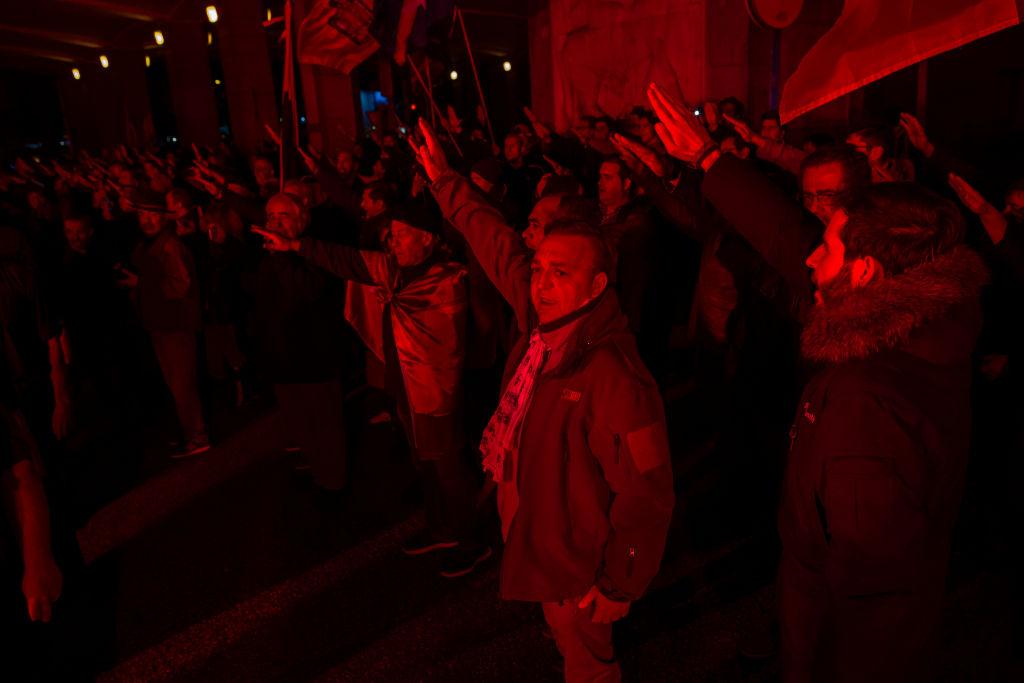
Mass shootings such as those in El Paso and Las Vegas and terror attacks such as those in New Zealand and Norway, along with the rise of nationalist, anti-immigrant, populist political parties, have put the spotlight on right-wing extremism.
In the United States between 2008 and 2017, far-right extremists or white supremacists were responsible for 387 fatalities. Over the same period in the US, Salafi-jihadists were responsible for 100 fatalities. In the UK, concern over right-wing extremism has led to the issue being placed under the jurisdiction of MI5 instead of the police.
The problem for many Western security services is that, unlike the jihadi movement, right-wing extremism is difficult to define and challenging to stop.
In 2000, Cas Mudde identified more than 25 different definitions of right-wing extremism, ranging from a focus on racism, xenophobia and nationalism to more complex definitions that include militarism, ethnocentrism and anti-pluralism, among other things. The quest for a definition stems from the need to set out not only what right-wing extremism is, but also what it is not.
It’s important to distinguish between those who advocate radical ideas that call for drastic changes to the political, economic and socio-cultural system and those who promote extremist and often anti-democratic views. Right-wing extremism doesn’t adhere to a singular political ideology, nor does it have a clear goal, such as the establishment of a caliphate. And in many democracies the early signs of extremism are masked as protected speech.
Contemporary right-wing extremism is a cacophonous, dispersed, transnational network, composed of at least four main streams that developed primarily in the US. The network itself is essentially made up of individuals who feel they’re part of an ‘in group’ and see themselves as enlightened. They believe that they have shed their false consciousness by taking the ‘red pill’.
The first stream is composed of avowed white supremacists. Mainly neo-Nazis, they draw on racial supremacy theories and cite pseudo-scientific texts like Crania Americana, an 1839 publication by American anthropologist Samuel George Morton. Morton looked at skull sizes and argued, without evidence, that Caucasians have larger skulls and therefore are more civilised than other people.
A second strand within right-wing extremism has a strong religious component, emphasising the superiority of the Christian faith and referencing the importance of the rapture, as seen with the Ku Klux Klan. Some within this strand, such as German political movement Pegida, contend that Christianity and Christians are under threat mainly from immigrants to Western countries. Its members claim that they want to prevent Islamisation and unchecked mass immigration.
Right-wing populists form a third strand that’s probably the largest of the four groups. It includes anti-immigrant political parties such as Geert Wilders’ Party of Freedom in the Netherlands, as well as more virulent ‘nationalists’ or overzealous patriots like Stephen Yaxley-Lennon, otherwise known as Tommy Robinson, leader of the English Defence League; Australian Blair Cottrell; and American Richard Spencer.
These individuals may subscribe to the ‘great replacement’ theory, though they are often careful not to preach violence, which allows them to play a role on the margins of mainstream politics. Over time, however, their ideas may be slowly adopted by mainstream parties or may become the mainstream, as seen with the Five Star Movement and Lega Nord in Italy, the Austrian People’s Party, and Alternative for Germany. Interfused within this movement is a fundamental rejection of traditional political parties, which are portrayed as liberal elitists adhering to an internationalist, globalist agenda.
The fourth strand of right-wing extremism is best seen as ‘others’. They include incels, sovereign citizens, the alt-right and identitarians.
A common feature that unites the various strands is emotion, most commonly anger, infused with irrational fear of and hostility towards the ‘other’ or the ‘out group’. Beyond the emotional aspect, Mudde and others have pointed out that right-wing extremism encapsulates characteristics including nationalism or nativism; racism; xenophobia; anti-democratic tendencies; support for a strong, often militarised, state; anti-establishment sentiments; and misogyny.
What has made right-wing extremism so dangerous and so difficult to counter is the internet, which allows people to connect much more easily and anonymously. Moreover, the extreme paranoia of the ‘in group’ means that they are committed to remaining anonymous until it’s time to take things to the next level.
The security community faces three key challenges in its attempts to tackle right-wing extremism. First, the disaggregated nature of the community means that it’s hard to identify nodes and hubs. By contrast, when security services seek to disrupt, for example, the dissemination of Islamic State propaganda, they can identify and then target nodes or hubs that are engaged in the creation of content or its dissemination.
Second, the lack of definition of the movement and the fact that many of its members operate within the boundaries of what is legal, and often defend their actions under protected speech or freedom of speech rights, means that it’s difficult to demand the removal of content from online platforms.
And finally, the transnational nature of the community means that its members can find homes in countries that have more permissive legislative regimes or are sympathetic to extremist ideas.
If we are to move forward in countering the growth of right-wing extremism, we must develop a better understanding of what the term encapsulates.
We should begin with a focus on extremism, trying to define what it means within the confines of our society. When we look at the far-right, we need to understand what type of a society they want to create and how they wish to do so. By understanding the goals of extremist groups, we can use democratic values to challenge them.